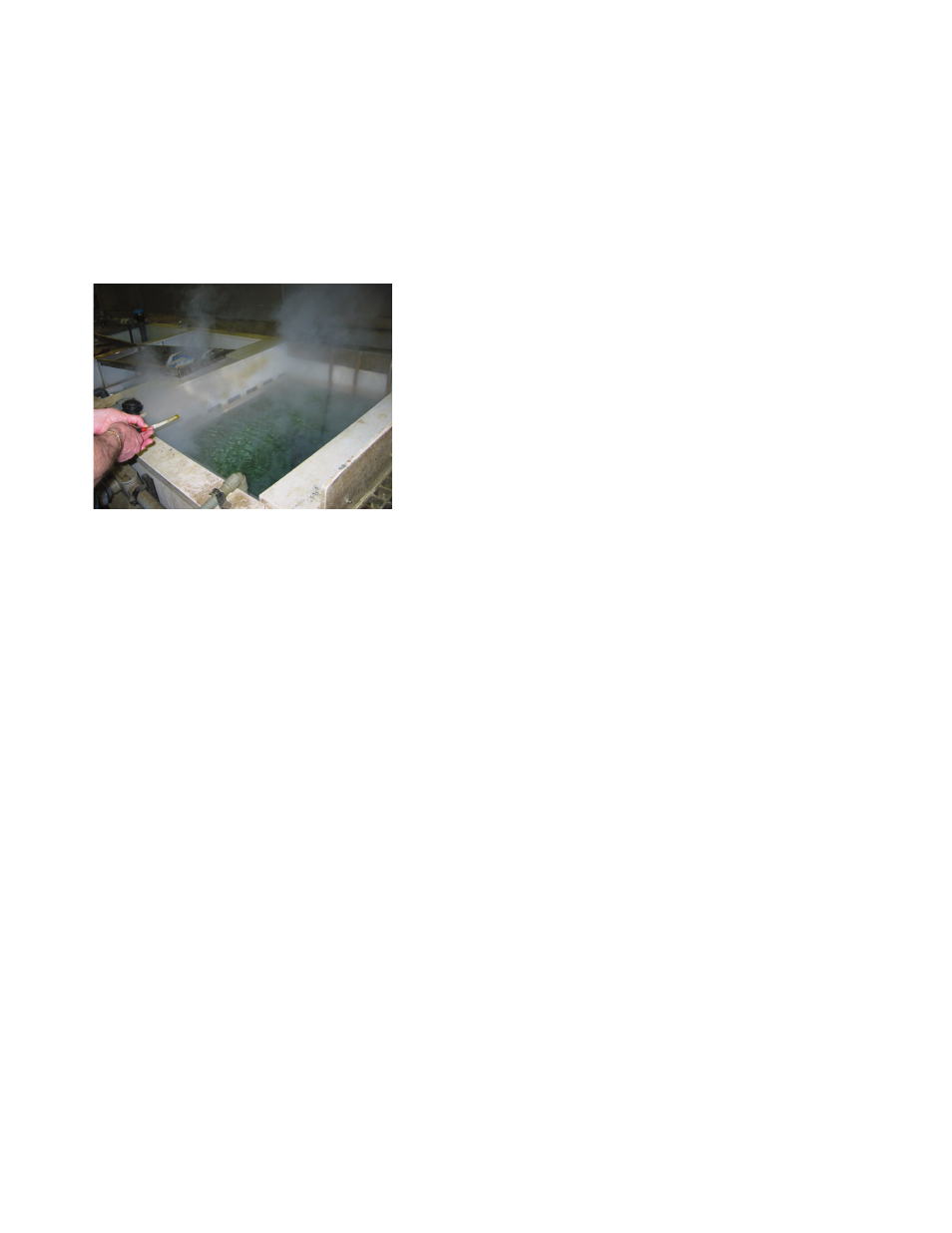Retrotec USACE User Manual
Page 241

Appendix D D111
tanks are being used (Figure D173). These exhaust systems move a lot of air
at a high velocity and thus consume high amounts of electrical energy. Plating
shops provide a wide variety of coatings to parts, and thus their operations are
sporadic and varied. The exhaust systems should function only when the tanks
they service are being used.
D.7.2.3 Hot Plating Tanks Have a Surface Temperature Greater
Than 52 °C (125 °F) (Waste).
Figure D174. Heated rinse tank that should be
insulated.
Some tanks in the plating process contain heated fl uids. These tanks need to
be well insulated to avoid wasting energy (Figure D174). Energy that is lost
to the surrounding space due to poor insulation means the heating coil inside
the tank must work harder to supply heat to the fl uid inside them. A proper
amount of insulation would result in the temperature of outer surfaces of the
furnace being no greater than 52 °C (125 °F). This is not only an energy-saving
concern, but a safety concern, to avoid skin burns. Surfaces warmer than this
temperature should be investigated for addition insulation.
D.7.2.4 Using Single-Side Exhaust Hood on Tanks 1.2 Meters (4
Feet) Wide or Wider (Ineffi ciency)
Exhaust hoods for a plating tank are placed on the side of the tank so that air
is drawn across the tank opening into the exhaust hood (Figure D175). This
keeps plating airborne contaminants from entering the general workspace. As
the plating tank gets wider, more air is required to achieve this air fl ow across
the tank opening. When the tank gets to 1.2 m (4 ft) wide, a second hood
should be added to the other side of the tank or a push-pull type of exhaust
system used so that air fl ow can be reduced. The exhaust air fl ow increases to
the square of the distance from the hood face. Thus, the air fl ow for a tank 1.2
m (4 ft) wide is four times more than the exhaust for a 2-foot-wide tank. Having
hoods on both sides of a 1.2-meter (4-foot)-wide tank has twice the air fl ow of
that for a 2-foot-wide tank and half of that when trying to draw all the air into
a hood located on one side of a 1.2-meter (4-foot)-wide tank. A push-pull type
of exhaust also has a reduced amount of exhaust air when compared to a hood
located on one side of the tank.
